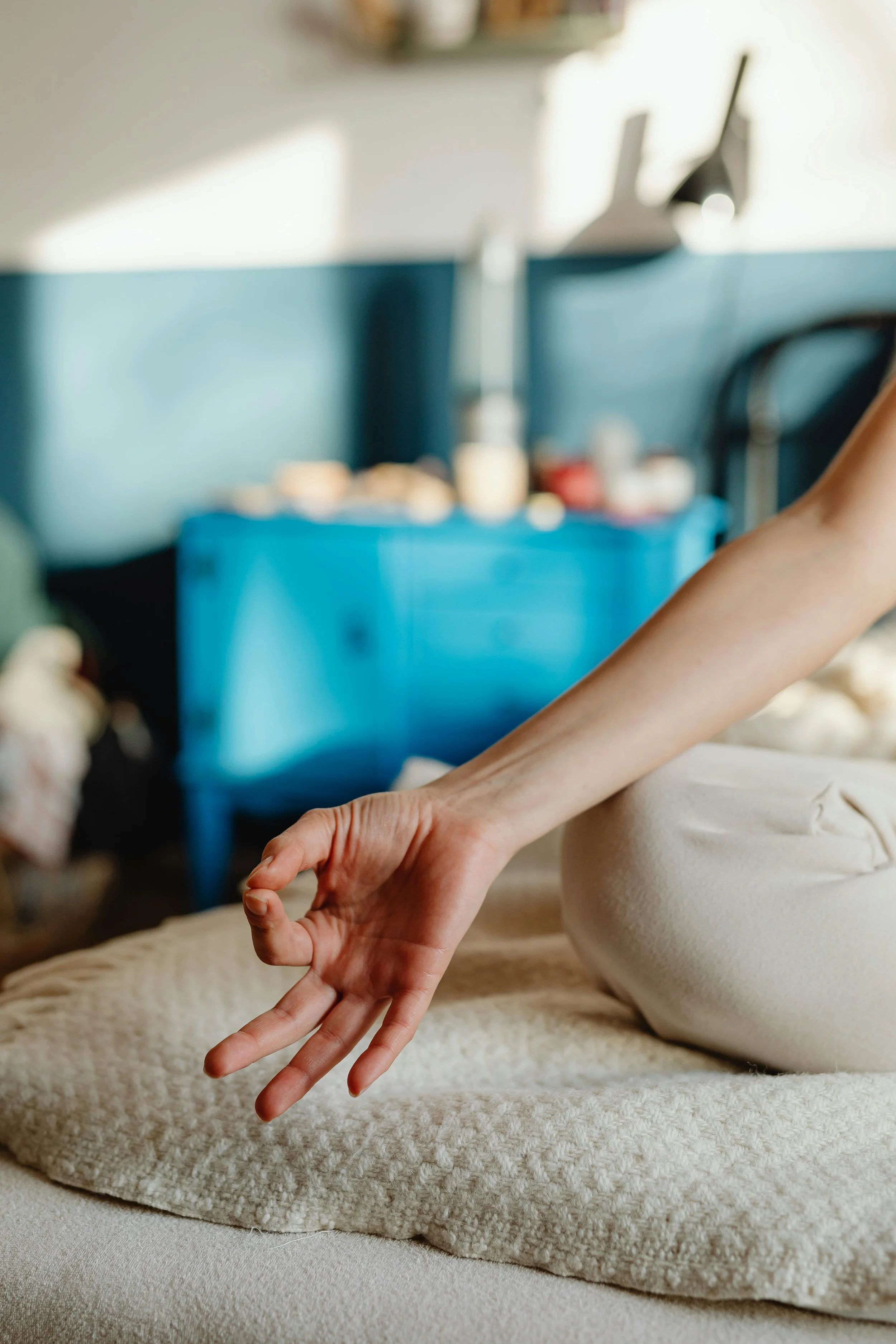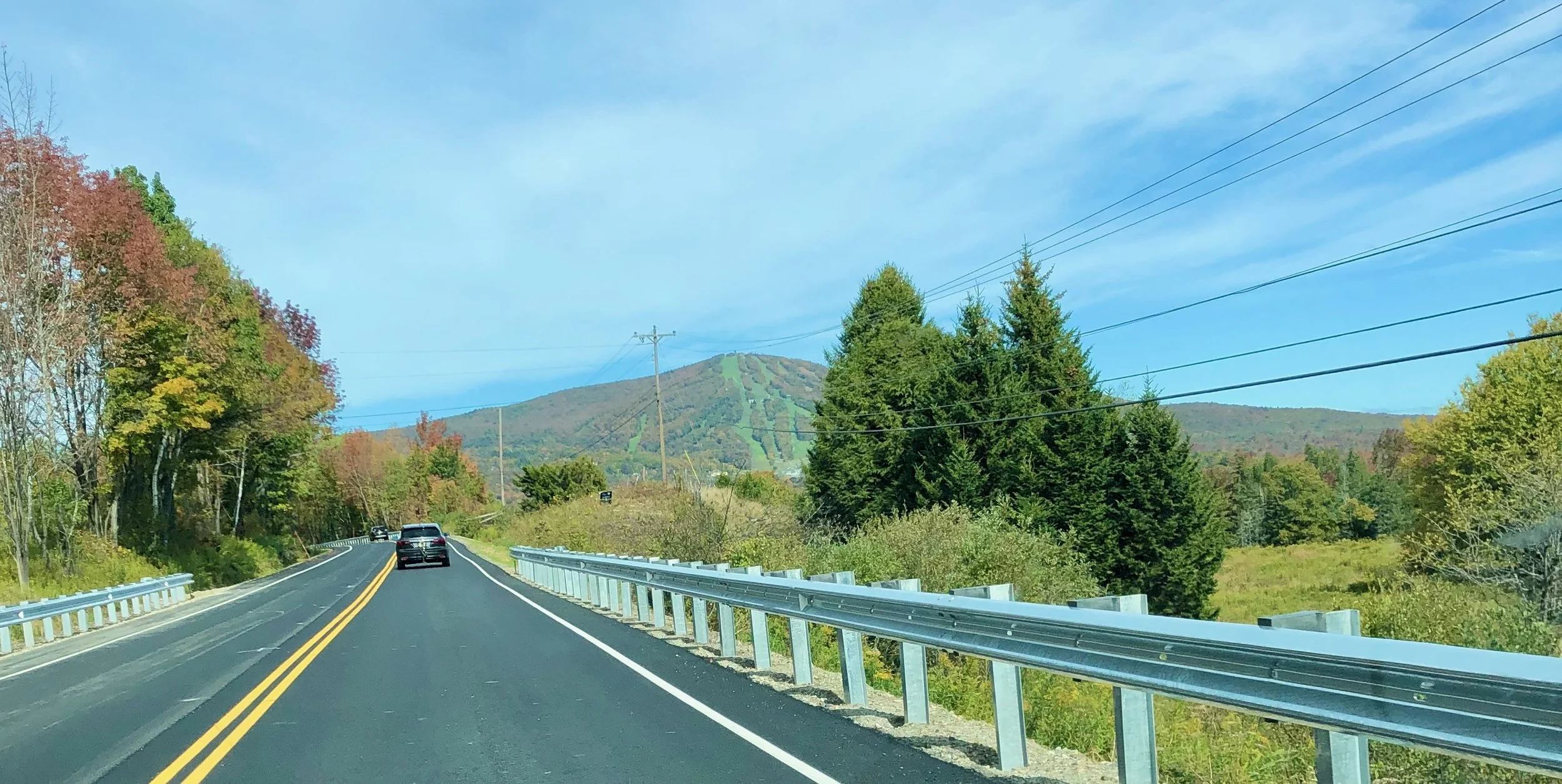5 Mistakes I Made When I Began Meditating (And What to Do Instead)
Photo by Lauren Diaz/Healthful Mindful
Disclosure: This post may contain affiliate links. If you decide to make a purchase via my links, I may earn a commission at no additional cost to you. See disclaimer for more info.
As someone who has struggled with anxiety for a large portion of my life, I was first drawn to meditation after hearing about the health benefits. I’d read articles about how meditation calms the mind, reduces stress, and can help reduce feelings of anxiousness. Meditation has been practiced for millennia, and the benefits of mindfulness have been studied for years. One article published in the American Journal of Psychiatry back in 1992, found that mindfulness meditation effectively reduced symptoms of anxiety and panic and helped maintain those reductions in patients with generalized anxiety disorder.
Meditation reduces anxiety? Sounds great, sign me up! I had visions of instant peace and tranquility. I thought I’d start meditating, become completely serene, and finally be able to turn off my overactive mind like a switch. My real experience, however, was far from that. I struggled, made a whole lot of mistakes, and was almost ready to give up, thinking that maybe meditation just wasn’t for me.
It was only after discovering some really good meditation teachers, taking a course in mindfulness based stress reduction (MBSR), and learning different styles of meditation, that I finally began to appreciate the full benefits of mindfulness. Looking back, I realize that the mistakes I made are common pitfalls, so I’m sharing them in the hopes that it might help you navigate your own meditation journey.
Mistake #1: I only tried to meditate when I was feeling anxious or upset.
I discovered meditation as a method to manage my anxiety, so naturally, I first tried to meditate when I was feeling particularly anxious or upset. Like many people, I thought the goal of meditation was instant calm. So, when I was on the edge of panic, I’d sit down with the intention of clearing my mind through meditation, only to find myself instantly frustrated with trying to pay attention to my breath while my thoughts were going crazy.
While meditation can help with anxiety, this method is a bit like trying to learn CPR during a heart attack. It's much more effective to practice when you're calm, so you have the skills to draw upon when you really need them. Think of it like building muscle. You don't go to the gym for the first time and expect to immediately be able to lift a car. You need to train regularly to build strength and endurance. Meditation is the same. You need to build your mental resilience through consistent practice.
The problem wasn’t just that I was trying to jump straight into a difficult situation without first building the skills, though. Later, I also learned that there was another challenge with my attitude towards meditation during these times. I’d go into these meditation sessions with the goal of calming myself down. I didn’t like how I was feeling in these moments, and so I was looking to use meditation as a tool to change my situation. Imagine my surprise when I later learned that two of the fundamental principles of meditation are non-judgment and non-striving.
In his book, Full Catastrophe Living, Jon Kabat-Zinn, the founder of MBSR, highlights seven attitudes of mindfulness. Two of these attitudes are non-judgment and non-striving. Non-judgment means that we open ourselves up to everything we are experiencing in the moment, without categorizing or judging our experience. Rather than thinking, “I can’t stop worrying and I hate this feeling,” we simply observe and acknowledge our mind’s activity. It is neither good nor bad. It just is. Non-striving refers to just being, rather than trying to do anything. This includes not trying to reach a goal through the meditation practice itself. Ironically, the best way to achieve a goal of stress reduction through meditation, is by not trying to achieve stress reduction and not striving to be calmer. Huh? If your reaction is anything like mine the first time I read that, you’re probably very confused right now. I thought meditation was supposed to make me calmer!
Here’s where one of the other principles of mindfulness, letting go, comes in. If you’ve ever experienced insomnia, you know that sometimes, the more you try to fall asleep, the more elusive sleep becomes. It is only when we let go and allow ourselves to just be that we are able to finally fall asleep. In the same way, striving doesn’t work in meditation. Meditation requires us to let go of our preconceived notions, judgments, and expectations.
Mistake #2: I thought that I couldn’t meditate when my thoughts were all over the place or I was experiencing strong emotions.
Photo by Karolina Grabowska on Pexels
Early on, I believed that I had to clear my mind to meditate. So, when my mind was racing or I felt overwhelmed with emotions, I assumed I was too keyed-up to meditate. I’d sit down and try to focus while my thoughts were bouncing between my to-do list, what I should have said during that argument earlier in the day, and what might happen tomorrow. I’d get frustrated and think that I couldn’t meditate and I’d have to try again after I calmed down a little bit more.
Having thoughts arise is completely normal, though, especially if you’re experiencing strong emotions. What I didn’t understand is that meditation isn’t about eliminating thoughts. Mindfulness is about learning to observe our thoughts and emotions without getting caught up in them. Some days, my mind feels like a snow globe that’s just been shaken. That doesn’t mean I can’t meditate. In fact, those moments are when meditation is the most valuable. The practice is noticing your thoughts, acknowledging them without judgment, and gently returning to the present moment.
Since I learned that my mind will wander and strong emotions can arise, I’ve had more success allowing myself to simply be with whatever is happening. I find a body scan practice to be especially helpful during moments like this. I’m able to give myself a clear focus to return to and I notice how my emotions are manifesting themselves physically in my body.
Mistake #3: I thought that if I didn’t do everything perfectly, my meditation didn’t “count.”
If you know me, you know that I’m a perfectionist. So naturally, I brought that same mindset into my meditation practice. I thought that there was a right way to meditate and if I got distracted, forgot to focus on my breath, or felt restless, then I felt like I hadn’t done it “properly.”
This all-or-nothing mentality kept me from sticking with meditation at first. I’d get discouraged when my sessions weren’t perfect, and I’d start giving up after just a few seconds, or decide to skip meditating altogether. What I didn’t realize is that meditation isn’t about perfection. It’s about showing up. Even if I only meditated for a few minutes, or my mind wandered 100 times, it still counted. Every time I sat down and practiced, even if it wasn’t “perfectly,” I was strengthening my mindfulness muscles.
My perspective completely shifted after speaking to a meditation teacher about this challenge. After explaining my frustration with my mind wandering, she gave me another way to look at it. Instead of failures, I learned to see distractions as opportunities. Every time my mind wanders and I notice it, it’s an opportunity to strengthen my mindfulness muscles - just like doing a rep at the gym. The moment of noticing and gently bringing my attention back doesn’t take away from my practice. It is the practice.
This completely changed how I approach meditation. Instead of trying to have a perfect session without any distractions, I can now see every time I catch my attention drifting as part of the process and as an opportunity to practice.
Mistake #4: I didn’t try multiple types of meditation.
At first, I only tried one style of meditation. I’d sit in silence and focus on my breath. And when I’d struggle with it at times, I’d think that maybe meditation just wasn’t for me.
What I didn’t realize was that there are many different types of meditation, and not all of them involve sitting still and focusing on the breath. Sometimes movement-based meditations, like yoga, tai chi, or mindful walking can be more effective. Other times a guided meditation, loving-kindness meditation, or body scan might resonate.
Sometimes, different meditation styles can be more effective depending on our current mindset or energy level. For example, if you’re feeling restless and unable to sit still, awareness of breath might feel like torture, while a moving meditation could enable you to release some of that excess energy in a mindful way.
Once I started exploring different types of meditation, I realized that I didn’t have to force myself into one rigid style. Some days, I prefer a walking meditation. Other days, a body scan helps me relax. By experimenting with different techniques, I can find what works best for me and I’ve been able to make meditation feel more enjoyable and sustainable.
Mistake #5: I thought that the only way to practice mindfulness was within a formal meditation practice.
In the beginning, I believed that mindfulness could only happen during a structured meditation session. If I didn’t have the opportunity to have a dedicated time to meditate, I assumed I wasn’t practicing mindfulness at all that day.
What I didn’t realize was that mindfulness isn’t limited to sitting with my eyes closed or even practicing a moving meditation like yoga. Mindfulness can happen in the middle of everyday life.
Photo by Lauren Diaz/Healthful Mindful
A meditation teacher once told me, “Every moment is an opportunity to practice mindfulness.” Since then, I’ve made a conscious effort to bring mindfulness into my everyday activities. Sometimes, instead of turning on the radio while driving, I make a conscious effort to be truly mindful. I take in the scenery. I notice my hands’ grip on the steering wheel and feel the pressure of my foot on the pedals. While washing dishes, I pay attention to the sensation of warm water on my hands. If I’m baking bread, I focus on the consistency of the dough as I knead it. I notice how it changes and becomes smoother and more elastic. I also find art to be a great way to practice mindfulness. When I’m painting or drawing on a Buddha board, I’m completely in the moment and my attention is fully on what I’m creating.
You can practice mindfulness anywhere. It doesn’t have to be confined to a formal meditation session. The key is to bring your full awareness to the present moment, whatever you are doing.
For me, this shift has made mindfulness feel more accessible and sustainable. While I still do my best to dedicate time to meditation, I can also weave mindfulness into small moments throughout my day. Whether it is taking a deep breath before responding to an email or simply pausing to listen to the sounds of the birds, mindfulness is always available.
Moving forward with mindfulness and compassion.
At the start of my meditation journey, I made a lot of mistakes and almost gave up. With time, guidance, and a shift in perspective, I’ve learned that meditation isn’t about perfection, clearing my mind, or forcing myself into a rigid practice. It’s about showing up, embracing the present moment, and allowing my experience to be exactly what it is.
I went into meditation looking for help with managing my anxiety. My journey has taught me that meditation isn’t about “getting it right.” Meditation is about being with yourself exactly as you are, without judgment, without striving. That has been an incredibly powerful lesson in my meditation journey but also in my personal journey, too.
If you’ve struggled with meditation or found it difficult, you’re not alone. The key is to be patient with yourself, stay open to different approaches, and remember that every moment is an opportunity to cultivate mindfulness. Keep experimenting, keep practicing, and trust that the benefits will come gradually, in ways you might not even expect.
What has your experience with meditation been like?
This article is for informational purposes only. This article is not, nor is it intended to be, a substitute for professional medical advice, diagnosis, or treatment and should never be relied upon for specific medical advice.




